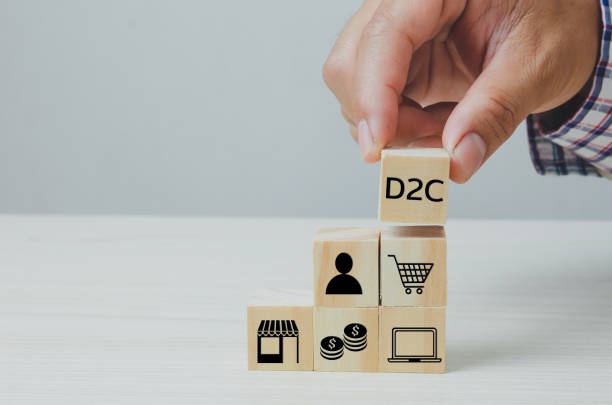Overcoming the Top Challenges of D2C Brands

Table of Contents
- Overcoming the Top Challenges of D2C Brands
- Challenges of D2C Brands
- Building brand awareness and standing out in the market
- Managing operations, including inventory, fulfilment, and logistics
- Maintaining customer loyalty in a competitive market
- Cost of customer acquisition through advertising and marketing efforts
- Investing in supply chain and logistics
- Intense competition from established retailers and other D2C brands
- D2C Limitations
- How D2C Brands are Growing in India?
- Is D2C the Future of Retail?
- How Can I Improve My D2C?
- Why is D2C Better Than B2C?
- Conclusion:
- FAQs:
- D2C Brand with StoreBud:
Overcoming the Top Challenges of D2C Brands
Direct-to-Consumer (D2C) brands have gained popularity in recent years for their ability to offer high-quality products at lower prices while maintaining control over their brand image and customer relationships. However, the D2C model also poses several challenges that businesses need to overcome to succeed. In this article, we'll explore the top challenges faced by D2C brands and how they can be overcome.
Challenges of D2C Brands
Building brand awareness and standing out in the market
One of the biggest challenges faced by D2C brands is building brand awareness and standing out in a crowded market. With so many brands vying for attention, it can be difficult to differentiate oneself and gain a loyal following.
Managing operations, including inventory, fulfilment, and logistics
D2C brands must also manage their operations, such as inventory, fulfilment, and logistics, to ensure a smooth customer experience. This can be a challenge, especially for smaller brands with limited resources.
Maintaining customer loyalty in a competitive market
Customer loyalty is crucial to the success of any business, but it can be difficult to maintain in a highly competitive market. D2C brands need to go above and beyond to keep their customers satisfied and engaged.
Cost of customer acquisition through advertising and marketing efforts
Acquiring new customers can be expensive for D2C brands, as they often rely heavily on advertising and marketing efforts to reach their target audience.
Investing in supply chain and logistics
D2C brands need to invest in their own supply chain and logistics, which can be expensive and time-consuming. However, it's crucial for brands to have control over these processes to ensure a seamless customer experience.
Intense competition from established retailers and other D2C brands
Finally, D2C brands face intense competition from established retailers and other D2C brands

D2C Limitations
While there are several c, it's essential to understand the limitations. Here are some of the limitations of D2C brands:
Limited Market Reach: Unlike traditional retailers, D2C brands have a limited market reach since they sell directly to customers. This makes it difficult to target customers who prefer buying from brick-and-mortar stores or other online marketplaces.
High Costs: D2C brands need to invest in website development, online marketing, logistics, and customer support. These costs can be significant, especially for small businesses.
Supply Chain Management: D2C brands need to have a robust supply chain to ensure timely delivery of products. They also need to manage inventory and ensure that products are always in stock.
How D2C Brands are Growing in India?
D2C brands are rapidly growing in India, thanks to the increase in e-commerce adoption and the rise of social media. According to a report by RedSeer, the D2C market in India is expected to grow from $2.5 billion in 2020 to $11.2 billion by 2025.
One reason for this growth is that D2C brands can offer products at lower prices than traditional retailers, thanks to the elimination of intermediaries. D2C brands are also able to provide a more personalized shopping experience, which customers value.
Another reason for the growth of D2C brands in India is the rise of social media. Social media platforms like Instagram, Facebook, and Twitter have made it easier for D2C brands to reach a larger audience and build a loyal customer base.
Is D2C the Future of Retail?
While D2C is still a relatively new concept, it's clear that it has the potential to disrupt traditional retail. With the rise of e-commerce and the increasing popularity of social media, D2C brands are able to reach customers more easily and provide a more personalized shopping experience.
However, it's important to note that D2C is not without its challenges. As mentioned earlier, D2C brands have a limited market reach, and they need to invest in website development, online marketing, and logistics.
That being said, the future of retail is likely to be a mix of traditional retailers and D2C brands. As customers continue to shift towards online shopping, traditional retailers will need to adapt to stay competitive. At the same time, D2C brands will need to find ways to expand their market reach and manage their costs effectively.
How Can I Improve My D2C?
If you're running a D2C brand, there are several things you can do to improve your business:
Invest in a user-friendly website that is easy to navigate and has a fast checkout process.
Use social media to build a loyal customer base and promote your brand.
Offer personalized shopping experiences, such as personalized product recommendations and targeted marketing campaigns.
Focus on customer service and provide timely responses to customer inquiries and concerns.
Continuously analyze your sales data to identify areas for improvement and optimize your business strategy.
Why is D2C Better Than B2C?

While both D2C and B2C models have their advantages, D2C is often considered better for several reasons:
Cost Savings: D2C brands can eliminate intermediaries and offer products at lower prices than traditional retailers.
Control: D2C brands have complete control over their brand image and customer experience, which can lead to better customer loyalty.
Flexibility: D2C brands can adapt more quickly to changing market conditions and customer preferences.
Data: D2C brands have access to more customer data, which can be used to improve their products and marketing strategies.
Conclusion:
In conclusion, direct-to-consumer (D2C) brands are becoming increasingly popular due to their ability to build strong relationships with customers and offer unique, high-quality products. However, they also face numerous challenges that can make it difficult to succeed in a competitive market. By understanding these challenges and implementing effective strategies to overcome them, D2C brands can improve their chances of success and grow their businesses.
One of the most significant challenges of D2C brands is customer acquisition, as they must find ways to attract and retain customers without the support of a physical store or established reputation. This requires a solid online presence, including a well-designed website, engaging social media content, and effective digital marketing campaigns.
Another challenge is managing the supply chain, as D2C brands must ensure they have adequate inventory, timely delivery, and effective returns processes. This can be especially difficult for smaller brands without the resources to manage these processes in-house.
D2C brands must also focus on providing excellent customer service, as this can be a significant differentiator in a crowded market. They must be responsive to customer inquiries and complaints, and be willing to go the extra mile to ensure customer satisfaction.
Finally, D2C brands must stay up-to-date with the latest trends and technologies, as the e-commerce landscape is constantly evolving. They must be willing to adapt and experiment with new approaches while maintaining a consistent brand identity and customer experience.
Overall, overcoming the top challenges of D2C brands requires a combination of strategic thinking, resource allocation, and a customer-centric approach. By focusing on these key areas, D2C brands can differentiate themselves from competitors and build successful businesses that deliver value to customers.
FAQs:
D2C Brand with StoreBud:

Looking to launch your own online store? Look no further than StoreBud! Our easy-to-use platform allows you to set up your own store in just 2 minutes, so you can start selling your unique products directly to customers. With features like customizable designs, secure payments, and powerful analytics, StoreBud makes it easy to grow your business and succeed in the competitive e-commerce landscape. Sign up now and join the growing community of successful D2C brands on StoreBud!
Q.
A: A direct-to-consumer (D2C) brand is a business that sells its products directly to consumers, without intermediaries such as wholesalers or retailers.
Q.
A: D2C brands are becoming more popular due to their ability to offer unique, high-quality products and build strong relationships with customers.
Q.
A: The biggest challenges facing D2C brands include customer acquisition, supply chain management, customer service, and keeping up with evolving technologies and trends.
Q.
A: D2C brands can overcome these challenges by focusing on strategic thinking, resource allocation, and a customer-centric approach.
Q.
A: StoreBud is an e-commerce platform that allows individuals and businesses to launch their own online stores in just 2 minutes. Sign up now to start selling your products directly to customers!